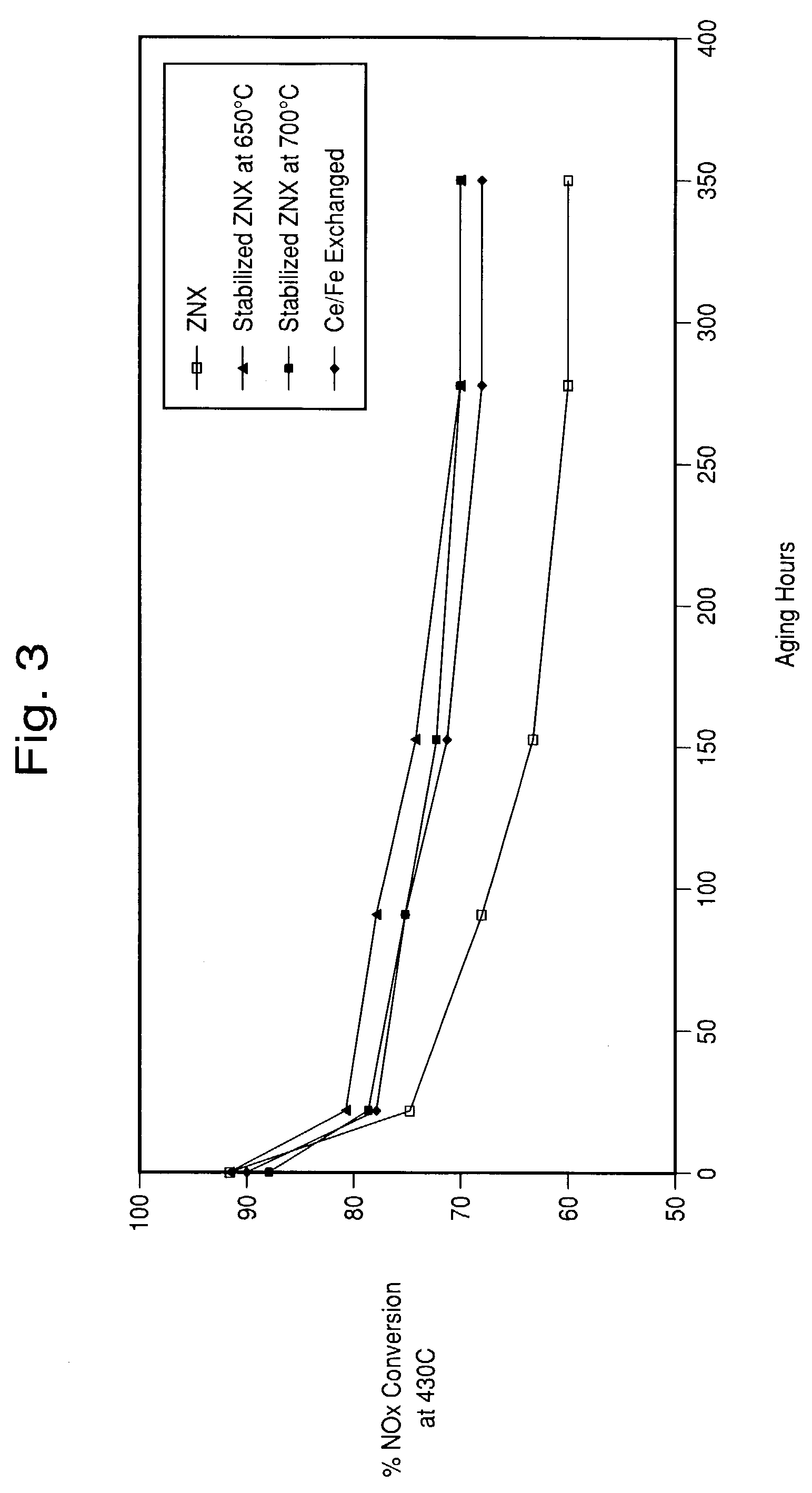Hydrothermally stable metal promoted zeolite beta for NOx reduction
- Summary
- Abstract
- Description
- Claims
- Application Information
AI Technical Summary
Benefits of technology
Problems solved by technology
Method used
Image
Examples
example 1
Preparation of a standard iron-promoted zeolite beta catalyst was as follows:
[0040]1. To 1,000 g of DI water (heated to 80° C.) was added 25.5 g of FeSO4.7H2O.
[0041]2. To this solution was added 212.5 g of Na+Beta.
[0042]3. The slurry in step 2 was kept with continued stirring at 80° C. for 1 hour and then filtered through a filter press and washed with an additional 2,000 g of water.
example 2
Preparation of honeycomb catalyst.
[0043]The filter cake formed in step 3 of Example 1 was slurried in 80 g of water. To this mixture, 44.3% of 20% Zirconium acetate solution was added. A defoamer (5 drops of NAPCO NXZ, defoamer by Hankel Corp.) was also added to the mixture and the whole slurry was sheared with a high shear mixer so as to provide a particle size distribution wherein 90% of the particles were less than 20 microns.
A honeycomb substrate was then dipped coated with this mixture, dried and calcined to 400° C.
example 3
Preparation of a stabilized iron-promoted zeolite beta was as follows:
[0044]1. The material prepared in Example 1 was spray dried and then calcined at 650° C. in the presence of 10% steam for 2 hours.
[0045]2. This material (212.5 g) was then added to an iron sulfate solution as described in Example 4 below. Concentrated sulfuric acid was then added to maintain a pH 2.
[0046]3. The resulting solution was then stirred for 1 hour, filtered and washed with 2,000 g of DI water.
[0047]4. A honeycomb catalyst was then prepared via the process as described in Example 2 above.
PUM
| Property | Measurement | Unit |
|---|---|---|
| Temperature | aaaaa | aaaaa |
| Temperature | aaaaa | aaaaa |
| Temperature | aaaaa | aaaaa |
Abstract
Description
Claims
Application Information
 Login to View More
Login to View More - R&D
- Intellectual Property
- Life Sciences
- Materials
- Tech Scout
- Unparalleled Data Quality
- Higher Quality Content
- 60% Fewer Hallucinations
Browse by: Latest US Patents, China's latest patents, Technical Efficacy Thesaurus, Application Domain, Technology Topic, Popular Technical Reports.
© 2025 PatSnap. All rights reserved.Legal|Privacy policy|Modern Slavery Act Transparency Statement|Sitemap|About US| Contact US: help@patsnap.com



